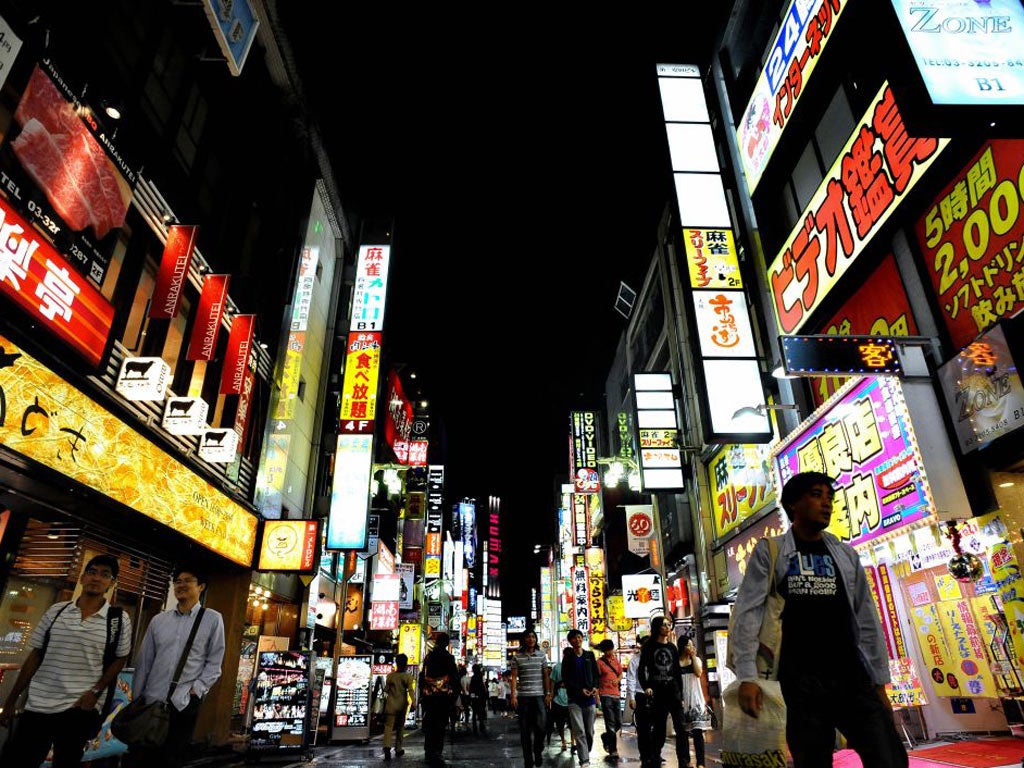Japan to build new city as back-up to quake risk Tokyo
New metropolis south of the capital will house 50,000 people and boast world's tallest structure

Your support helps us to tell the story
From reproductive rights to climate change to Big Tech, The Independent is on the ground when the story is developing. Whether it's investigating the financials of Elon Musk's pro-Trump PAC or producing our latest documentary, 'The A Word', which shines a light on the American women fighting for reproductive rights, we know how important it is to parse out the facts from the messaging.
At such a critical moment in US history, we need reporters on the ground. Your donation allows us to keep sending journalists to speak to both sides of the story.
The Independent is trusted by Americans across the entire political spectrum. And unlike many other quality news outlets, we choose not to lock Americans out of our reporting and analysis with paywalls. We believe quality journalism should be available to everyone, paid for by those who can afford it.
Your support makes all the difference.Developers in Japan have unveiled plans to build a "back-up" capital city in case Tokyo is hit by a devastating natural disaster.
The proposed metropolis, mooted eight months after a powerful earthquake and tsunami ravaged Japan's north-east coast in March, would provide a stand-by base for the Japanese parliament in the event that a debilitating emergency hit the capital.
But it would not be a solely functional development. In addition to government buildings and sprawling office complexes, it would boast hotel resorts, urban parkland, casinos and a 652-metre-high skyscraper, which would become the tallest building in the world.
The city, which has been given the functional name IRTBBC (Integrated Resort, Tourism, Business and Backup City), would span approximately five square kilometres and would potentially replace Japan's Itami International Airport located near Osaka, around 300 miles west of Tokyo.
"The idea is being able to have a back-up, a spare battery for the functions of the nation," said Hajime Ishii, a member of Japan's governing Democratic Party, who helped unveil the project.
The plans offer the latest reaction to the devastation caused by the powerful earthquake and tsunami which struck Japan earlier this year, killing nearly 16,000 people and displacing more than 400,000. Almost 4,000 people are still missing, according to figures published this week by Japan's National Police Agency. Tokyo escaped the disaster relatively unscathed, as most of the city's buildings were constructed to withstand tremors, unlike more traditional buildings in rural areas.
However, scientists at the Tokyo Earthquake Research Institute have since warned that the capital faces a 70 per cent likelihood of being affected by another powerful earthquake within the next 30 years.
The proposed city remains in the planning stages, though the developers behind it already claim to have the support of more than 100 politicians, including former Prime Minister Naoto Kan and Shizuka Kamei, a leading member of Japan's opposition People's New Party. Planners have asked the government for 14 million yen (£115,000) to research the feasibility of the proposed developments. It is thought the full cost of building the city would mostly be met by private investors.
Far from being a ghost city during less turbulent times, the developers behind the plans have proposed that the city would have a resident population of around 50,000 people. They also expect the state-of-the-art offices to attract around 200,000 workers from nearby Osaka.
Join our commenting forum
Join thought-provoking conversations, follow other Independent readers and see their replies
Comments